When I first became a plant-based vegan I was completely confused about what to buy. I didn’t have a vegan grocery list, and I had no idea where to start. This guide provides you with everything you need to know to stock your pantry, fridge, and freezer so that you can create delicious and nutritious vegan meals!
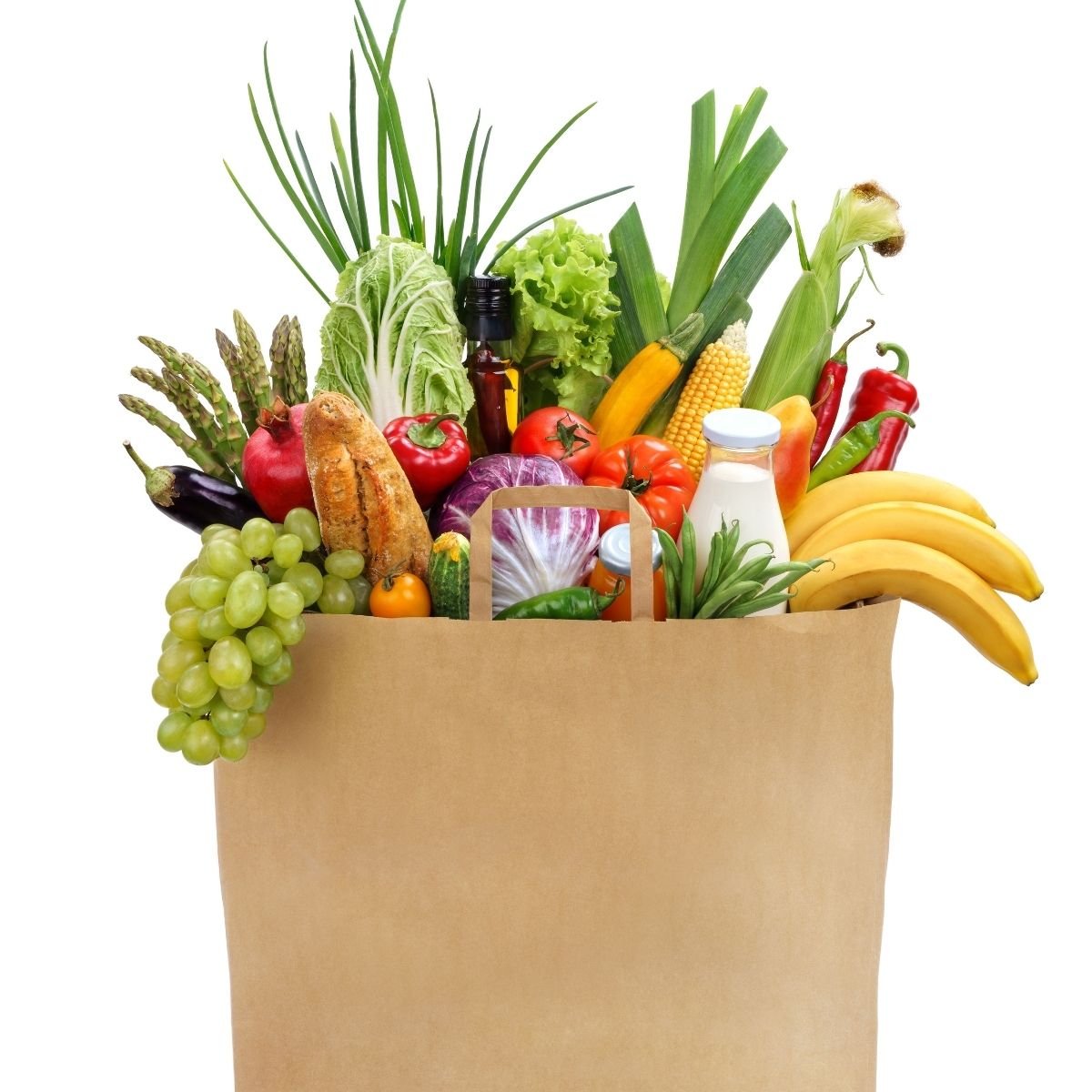
If you’re a vegan beginner, looking for a budget-friendly grocery list, or an experienced plant-based vegan, in need of some inspiration, you’ve come to the right place!
The first time I went to the grocery store after becoming vegan I spent hours reading labels on everything I picked up.
I was shocked by all the added ingredients in things I had been buying for years. Manufacturers fooled me into thinking something was healthy by plastering buzz words on the front of their packaging like “whole grain” and “healthy.”
I wanted to buy healthy whole foods with minimal to no processed ingredients, and wished I could print out a list of what to buy, go to the grocery store, and grab what I needed. With two kids in tow lacking patience, my time at the grocery store was limited.
Lucky for you I created this complete vegan grocery list you can print off and take with you to the grocery store. You’ll be able to stock your pantry and fridge full of nutritious and filling foods to help you on your journey towards a more plant-forward lifestyle.

I also have many resources to help you with creating simple vegan recipes with these ingredients such as my 5 Lazy Vegan Recipes, meal prep tips, and easy vegan dinner ideas!
Jump to:
- What do you eat when following a plant-based vegan lifestyle?
- What don’t vegans eat?
- How do vegans get enough protein?
- What should you include on your vegan grocery list?
- Produce: Fresh Fruits and Fresh Vegetables
- Bread and Tortillas
- Pasta and Grains
- Beans/Legumes/Canned Items
- Nuts and Seeds
- Dairy Alternatives
- Baking and Cooking Essentials
- Spices
- Vegan Packaged Snacks
- Vegan Treats
- Vegan Foods to Limit or Avoid
- Common Questions
- More Vegan Guides and Resources!
What do you eat when following a plant-based vegan lifestyle?
Here’s a complete breakdown of what to eat when following a plant-based vegan lifestyle:
- Fresh Produce
- Whole Grains
- Nuts and Seeds
- Non-Dairy Milk Alternatives
- Beans and Lentils
- Vegan Baked Goods
What don’t vegans eat?
In essence, you can eat everything with the exception of animal products. Seems simple enough, right? Not so much when you’ve been following a typical American diet most of your life. Here are the foods you exclude from your diet if following a vegan lifestyle:
- Meat (beef, pork, lamb, veal, and other red meat)
- Poultry (chicken, turkey, duck, quail)
- Pork (bacon, sausage, hot dogs, ham, pork ribs, pork tenderloin, etc)
- Fish (all types of fish and fish sauce)
- Shellfish (shrimp, scallops, lobster, mussels, clams)
- Eggs (all types of eggs from any type of animal including chickens, quail, fish, etc)
- Dairy Products (milk, yogurt, cheese, butter, ice cream, etc)
- Honey (made from bees)
- Mayonnaise (made with eggs)
How do vegans get enough protein?
One of the most common misconceptions about a vegan lifestyle is that you won’t get enough protein. Those who are used to getting their protein from animal products will need to make a few adjustments to where they get their protein, but you will certainly get enough protein if you eat a balanced vegan diet.
The recommended amount of protein depends on your weight. According to Harvard Health, you should multiply your weight by .36 to determine how much protein you need a day. However, this number can be slightly more if you are an active person. Use this calculator to help you determine how much protein you need. For example, a 50-year-old woman who weighs 140 pounds, and is moderately active needs 51 grams of protein.
Here is a snapshot of 51 grams of plant protein:
- 1 cup cooked beans-16 grams
- 1 cup of cooked lentils-18 grams
- ¼ cup of nuts-7 grams
- 1 cup of broccoli- 3 grams
- 1 cup of green peas-8 grams
There is a surprising amount of protein in whole grains like oats, quinoa, and brown rice. You can also get protein from your favorite vegetables like broccoli, spinach, edamame, asparagus, artichokes, potatoes, sweet potatoes, and Brussels sprouts. You don’t need to get all your protein from beans and lentils.
What should you include on your vegan grocery list?
At first, a vegan diet may seem limited when you think of all the foods you used to eat, and you see the list of the things you can eat. Exactly what should you buy? I’ve got you covered! I’m going to show you how to shop and fill your cart with new and exciting foods you and your family are going to love without feeling deprived.
Let’s break down each of these categories so you can see how many options you have.
- Fruits (Fresh and Frozen)
- Vegetables (Fresh and Frozen)
- Legumes (Beans and Lentils)
- Nuts and Seeds
- Whole Grains
- Dairy Alternatives
- Herbs and Spices
- Pantry Staples
- Natural Sweeteners
- Condiments
- Baking Ingredients
- Cooking Essentials
- Packaged Foods and Treats
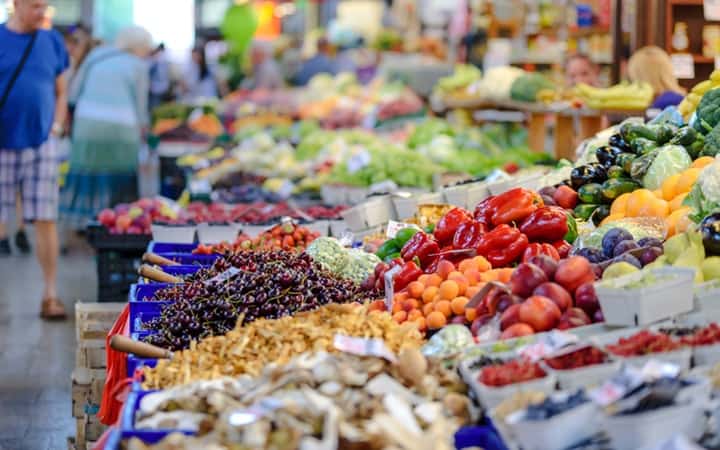
Produce: Fresh Fruits and Fresh Vegetables
Fill your cart with colorful seasonal produce. Fall is harvest time so that means that there are abundant fruits and vegetables in season to take advantage of. In the summer that means berries, peaches, and cherries. Spring is the season for asparagus, spinach, greens, onions, and carrots. In winter that means lots of squash. My favorite place to buy produce is at the local farmer’s markets. You know their produce is fresh and in season! Fresh and frozen fruit and vegetables make delicious smoothies, and should be added to all of your meals.
Whenever you can, buy organic, or follow the EWG Dirty Dozen and Clean 15 Lists. These lists outline the 12 fruits and vegetables you should always buy organic due to pesticide exposure, and the 15 fruits and vegetables you do not need to buy organic because of limited pesticide exposure.
There are some fresh fruit and vegetables I always have on hand because I use them so often for snacking, baking, and cooking. Fresh fruits and vegetables are full of vitamins, minerals, and antioxidants. Those include…
- Apples
- Bananas
- Grapes
- Citrus Fruits: Oranges, Limes, and Lemons
- Berries: Strawberries and Blueberries
- Avocado
- Cherry Tomatoes
- Bell Pepper (red, yellow, orange, green)
- Onions
- Garlic
- Cucumbers
- Carrots
- Leafy Greens: Kale, Spinach, Swiss Chard, Arugula, Cabbage
- Zucchini
- Sweet Potatoes
- Mushrooms
- Cauliflower
- Broccoli
- Celery
- Fresh Herbs: Basil, Parsley, Cilantro
Seasonal Fruits and Vegetables:
- Plums
- Pears
- Mangos
- Blackberries
- Watermelon
- Raspberries
- Apricots
- Pineapple
Bread and Tortillas
You can still make delicious sandwiches, wraps, tacos, and burgers when following a plant-based vegan lifestyle.
However, you’re no longer going to opt for white sandwich bread. Here’s why…many loaves of bread are already vegan, but not all bread is plant-based. What does that mean? If a loaf of bread or tortilla is made with enriched flour, even if it’s enriched wheat flour, it’s no longer a whole grain.
The goal of a whole food plant-based vegan diet is to eat foods that are minimally processed. The word “enriched” means that it’s been through a process to strip the grain of its core nutrients making it more easily digestible.
That might seem like a good thing, but it’s not. When you keep the grain intact as in 100% whole wheat flour you gain fiber and nutrients from the grain. You also stay fuller longer than if you eat foods made with enriched flour because you digest them more quickly leaving you hungry more quickly.
You’ll actually eat less bread when you eat whole grains because you will feel fuller. If you’re gluten-free lookout for processed bread. Just because something is labeled gluten-free does not mean it’s healthy or unprocessed. Read the labels to see what types of flours are used in these bread and tortillas.
The bread and tortillas you’ll buy…
- 100% Whole Wheat or Whole Grain Breads (Dave’s Killer and Ezekiel are good options)
- English Muffins
- Bagels
- Whole Wheat Tortillas
- Corn Tortillas
- 100% Whole Wheat Pita
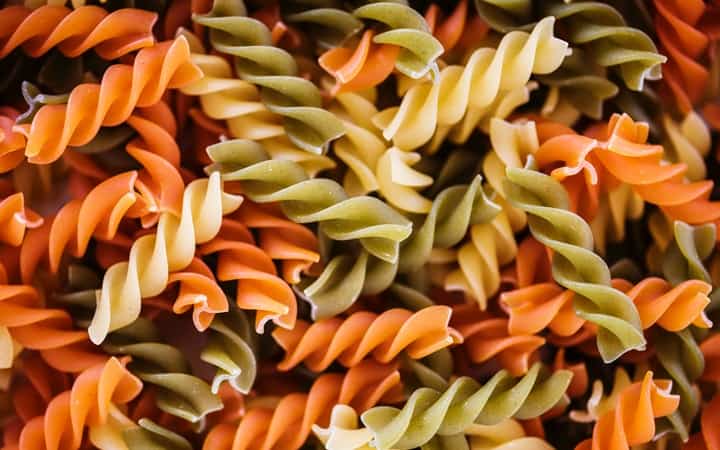
Pasta and Grains
The same as above goes for pasta and grains. No more white pasta. It lacks nutritional value, and when you’re vegan you need to get nutrients from all your food sources. Instead of white pasta, you’ll get 100% whole wheat pasta. Now, I usually cook with lentil and chickpea pasta because it has added protein and it’s naturally gluten-free.
You’ll also buy grains you might not have used in the past like farro, bulger, and quinoa. Quinoa is actually a seed but I put it in the grains section because of the way it’s cooked and prepared.
These whole grains taste great in salads, as side dishes, as base for loaded veggie bowls, and stir-fries. Oats are another staple. You probably know them best for breakfast, but with oats, you can also make your own granola, as well as use them in desserts, and main dishes.
- 100% whole wheat pasta
- Chickpea pasta
- Lentil pasta
- Farro
- Bulger
- Quinoa (great protein source)
- Oats
- Brown Rice (I avoid white rice, but you can add this to your list if you prefer.)
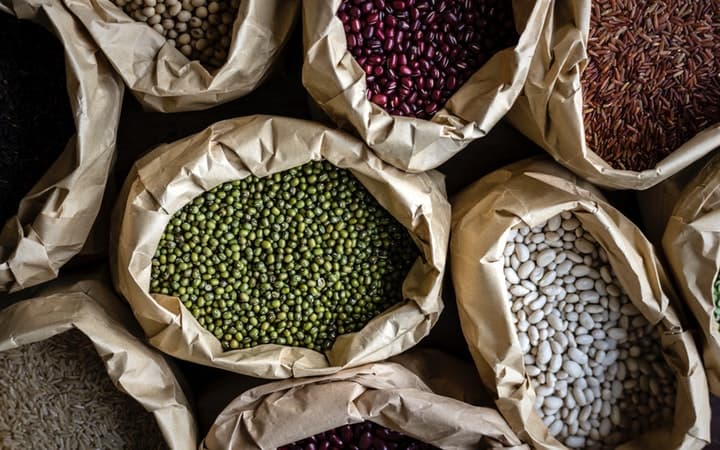
Beans/Legumes/Canned Items
You will get enough protein by consuming legumes. Legumes include any food that derives from a seed pod. That includes all types of beans, lentils, peas, and soybeans. Beans and lentils are a staple in plant-based cooking. You’ll use them to make fillings for burgers, tacos, loaves, salads, soups, curries, stir-fries, snacks, and many others.
You can purchase canned beans to save prep time or you can purchase dried beans to save money. I cook my beans in the crockpot overnight, and when I wake up I have a week’s worth of beans prepped. I also buy canned beans for those times when I need to pull together a recipe and I haven’t prepped my beans for the week, or I need multiple types of beans.
You can purchase already prepared lentils from places like Trader Joe’s. However, I always buy dried lentils and make them myself. They cook so quickly, unlike beans, that you don’t really need to save the prep time with lentils. I like using a variety of lentils for different purposes. Check out this post for Lentil Tacos where I outline all the types of lentils and their different uses.
I also buy some canned items that I keep in stock that I use in many recipes. Canned tomatoes and canned coconut milk are always on my weekly shopping list.
- Black Beans
- Kidney Beans
- Garbanzo Beans/Chickpeas
- Pinto Beans
- Edamame
- Brown Lentils
- Yellow or Orange Lentils
- Black Lentils
- Tomato Sauce
- Diced Tomatoes Canned (fire roasted and regular)
- Coconut Milk Canned (regular or light)
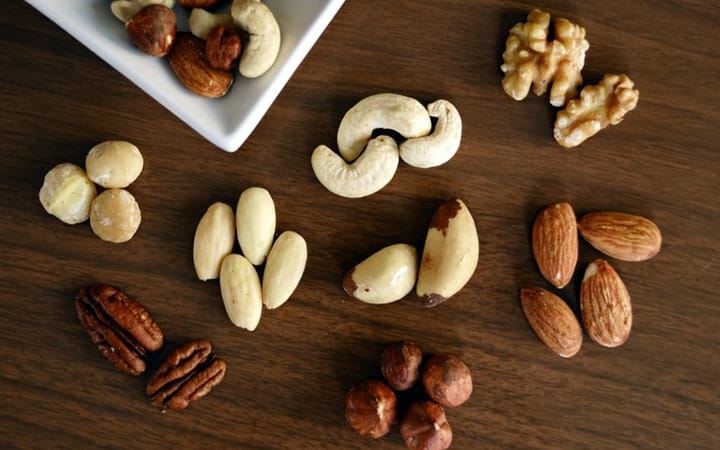
Nuts and Seeds
Nuts and seeds offer healthy fats and protein. They are also key to making spectacular sauces, and for baking up some decadent desserts. You can also make your own dairy-free milk, and cheeses with nuts.
Purchase raw nuts and nut butter whenever possible. This means that they haven’t been roasted in oil. Also, look at the ingredients when buying nut butter. There should be only one ingredient.
If you’re buying peanut butter the only ingredient should be peanuts. Many nut butter brands add sugar and palm oil to make them sweeter and more easily spreadable. I usually always have on hand peanut butter, almond butter, and raw cashews.
- Peanuts and Peanut Butter
- Cashews and Cashew Butter
- Almonds and Almond Butter
- Raw Walnuts
- Pumpkin Seeds
- Chia Seeds
- Flax Seeds of Ground Flax
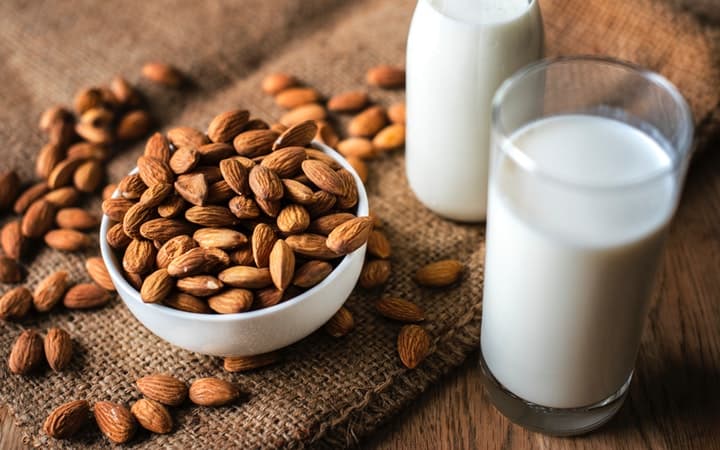
Dairy Alternatives
When it comes to non-dairy milk you don’t need to have all types of milk on hand in your refrigerator. I recommend buying one type of non-dairy milk a week and experimenting to see which one you prefer.
I typically use almond milk because I find that it’s versatile and easily incorporates into the recipes I prepare without adding a strange flavor. Cashew milk is a bit more creamy. Many people like soy milk. Oat milk has become popular in recent years.
Try my Easy Homemade Oat Milk Recipe. When buying non-dairy milk purchase one without added flavor or sugar. Vanilla-sweetened almond milk has a bunch of added sugar and will taste strange when you use it in recipes that call for a milk substitute.
Dairy-Free Milk Products:
- Unflavored Original Almond Milk
- Vegan Mayo
- Unsweetened Soy Milk
- Vegan Cream Cheese
- Unsweetened Cashew Milk
- Original Oat Milk
- Dairy Free Plain Yogurt
- Vegan Cheese (I prefer to make my own then use store-bought.)
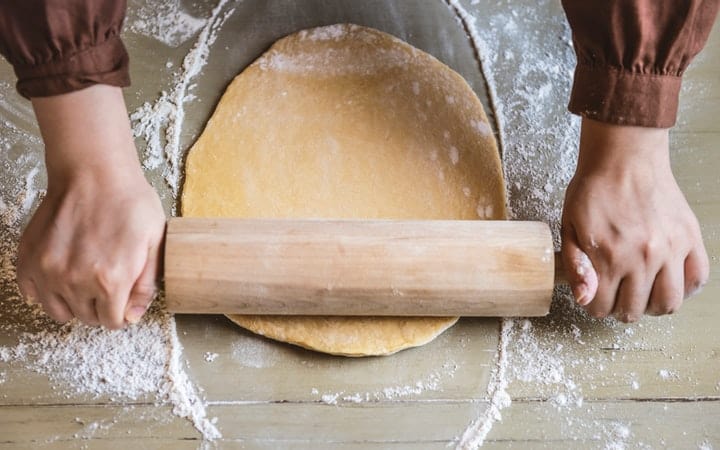
Baking and Cooking Essentials
You can still enjoy sweet indulgent baked goods when you shop with your vegan grocery list, only you don’t have to feel guilty or get a sugar high as a result. I use natural sugars as much as possible, which means pure maple syrup instead of white sugar.
I use a combination of ground chia and water or ground flax and water as an egg substitute in baking. You can also use a combination of gluten-free flours to create gluten-free treats or whole wheat flour. Nut butter is also used to bind ingredients.
Chocolate is also allowed! I use cocoa powder when baking chocolate treats, and vegan chocolate chips. Check out this recipe for Chocolate Peanut Butter Energy Balls or my Chocolate Nice Cream.
When I’m cooking oil-free I use vegetable stock to sauté my vegetables, or I use soy sauce when making a stir-fry. I sometimes use oil in baking or cooking, but use it sparingly, and if there’s a way to leave out the oil, I do. When I do use oil I use extra virgin olive oil and coconut oil.
Baking Essentials:
- 100% Whole Wheat Flour
- Gluten-Free Flour Blend
- Almond Flour
- Baking Powder/Baking Soda
- Sweeteners: Pure Maple Syrup, Agave, Coconut Sugar (Note: Avoid honey, which is not considered vegan)
- Dates
- Vanilla Extract
- Cocoa Powder
- Vegan Chocolate Chips
Cooking Essentials:
- Vegetable Broth
- Cornmeal
- Nutritional Yeast
- Apple Cider Vinegar
- White Vinegar
- Condiments: Soy Sauce, Salsa, Mustard, Tahini, Hummus
- Dried Herbs: Oregano, Garlic Powder, Onion Powder, Coriander, Cumin
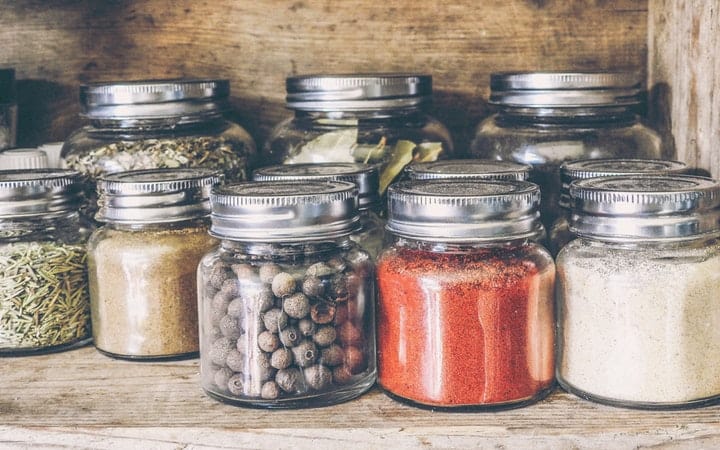
Spices
There are so many spices and my cabinet is full. I collect spices as I create new dishes, but if you’re just getting started with plant-based cooking and not sure where to begin, these spices are used in many recipes and really add flavor.
- Paprika
- Cumin
- Coriander
- Curry
- Turmeric
- Garlic Powder
- Onion Powder
- Cayenne Pepper
- Chili Powder
- Cinnamon
- Ginger
- Thyme
- Sage
- Salt and Black Pepper
Vegan Packaged Snacks
When it comes to packaged vegan snacks and treats, there isn’t a whole lot out there that I recommend, however, I know how important it is to have some packaged snacks at the ready, to put in your lunch, or take with you when you’re on the road, or just have at the ready when you get the munchies.
I have a post dedicated to my top favorite plant-based snacks in which I list 20 of my favorite store-bought snacks and where to buy them. Here is a short-hand list.
- Raw Nuts
- Sunflower Seeds
- Sugar-Free Dried Fruit (cranberries, raisins, etc)
- Popcorn (I like Skinny Pop)
- Dry Roasted Edamame
- Apple Chips
- Cauliflower Crisps
- Mary’s Gone Crackers
- HU Crackers
- Flaxseed Crackers
- That’s It Fruit Bars
- Larabars
- Rise Protein Bars
- The GFB Coconut Cashew Bites
Vegan Treats
When it comes to vegan treats, I usually make my own! I’ve got lots of delicious vegan desserts from brownies, cookies, cakes, and more! But if you’re looking for something you can buy at the store these are my recommendations.
- Dark Chocolate (Check that it does not have any milk)
- Coconut Milk Ice Cream (I love the Chocolate Coconut Milk Ice Cream from Trader Joe’s)
- Made Good Chocolate Chip Cookies
- Enjoy Life Chocolate Chip Cookies
There are lots of other baked goods, ice creams, chocolates, and candies you can buy at vegan-friendly bakeries and grocery stores. Whole Foods and Trader Joe’s both have a good selection.
Vegan Foods to Limit or Avoid
Not everything that is vegan is healthy. There are some vegan foods you want to avoid or eat on an occasional basis. These food items include…
- Meat Alternatives: Made with processed soy protein, oil, and other processed ingredients they are no better than the real thing.
- Processed Dairy-Free Alternatives: This includes processed dairy-free cheeses, sour cream, ice cream that is high in sugar, cream cheese, butter, etc. These items should be limited or avoided.
- Highly Processed Oils High in Omega-6: These include soybean oil, corn oil, cottonseed oil, sunflower oil, peanut oil, sesame oil, and rice bran oil.
- Gelatin: This sneaky ingredient is added to a variety of packaged products, and is not vegan friendly. Jellos, pudding, and yogurts, often have gelatin added.
Before you do your grocery shopping or try to make your own list, I’ve already done the work for you! Grab your printable vegan grocery list below!

The items on this vegan grocery list are my go-to’s, but I do use other ingredients as needed. For example, soy products such as tofu, and tempeh. This is a great place to start when you’re just beginning and setting up your plant-based kitchen. Avoid food waste, save money, and have all the ingredients you need at your disposal!
Common Questions
That really depends on what you are buying. It’s difficult to give an exact number as groceries are always changing in price, and produce will change depending on the season. However, I can tell you that buying vegan is more cost-effective than a typical American diet if you stick to natural foods meaning limiting processed vegan foods. Vegan cheeses, vegan meats, etc are more expensive than regular meats and cheeses. But beans, legumes, nuts, and seeds, are less expensive than animal meat. If you are on a budget, buy dried beans, rather than canned. Look for seasonal produce that is on sale, and buy shelf-stable foods in bulk.
You can find vegan foods at virtually any grocery store nowadays. I typically shop at my local farmers’ market, Trader Joe’s, Whole Foods, and Costco. But that is because those stores are close and convenient for me. However, you can find dried beans, lentils, and fresh produce at any local grocery store.
I advise people who decide to move towards a vegan lifestyle to start slowly and ease into it. Set a goal for yourself each week, that is manageable. Maybe the goal is to eat one meal a day that’s plant-based, or perhaps it’s one meal every other day. You decide what is manageable for you. As you meet each goal, try adding one more plant-based meal into your rotation. I know it can be difficult when the other people in your home are not on board with your change in lifestyle. I have found that slowly introducing more and more vegan-friendly meals helps to get the rest of the family on board. But remember, it’s not about perfection! Do your best!
More Vegan Guides and Resources!
I hope that you found this list of vegan food essentials helpful. If you have any other questions, comment below. You can also follow me on Facebook, Instagram, and Pinterest for more vegan recipes and tips!
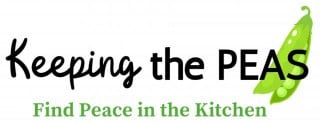

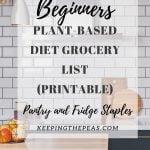
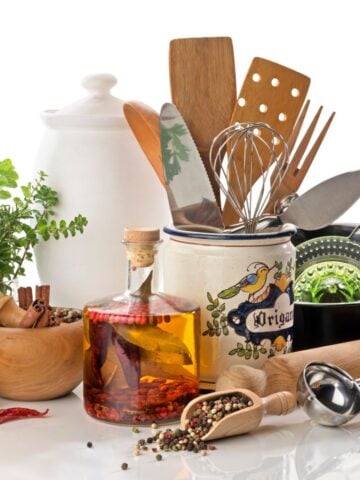
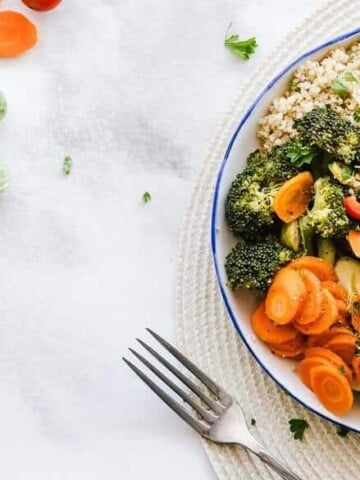
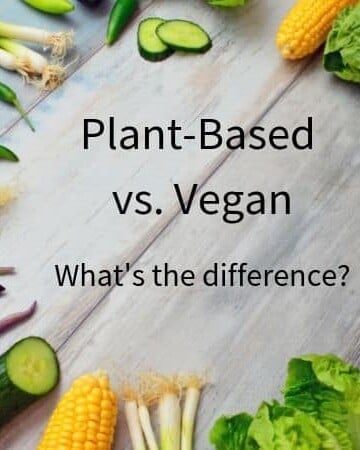
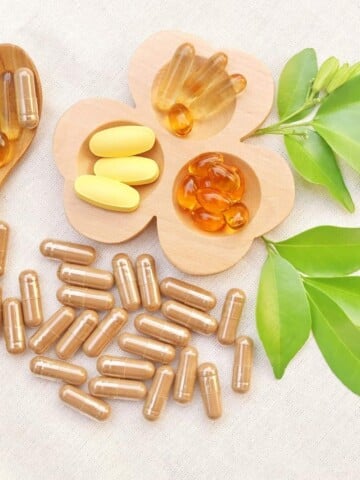
Leave a Reply